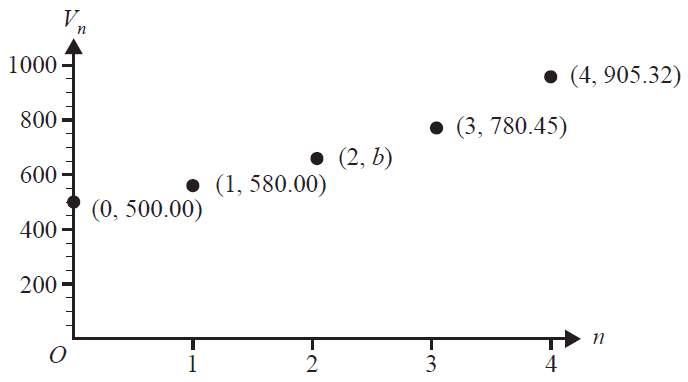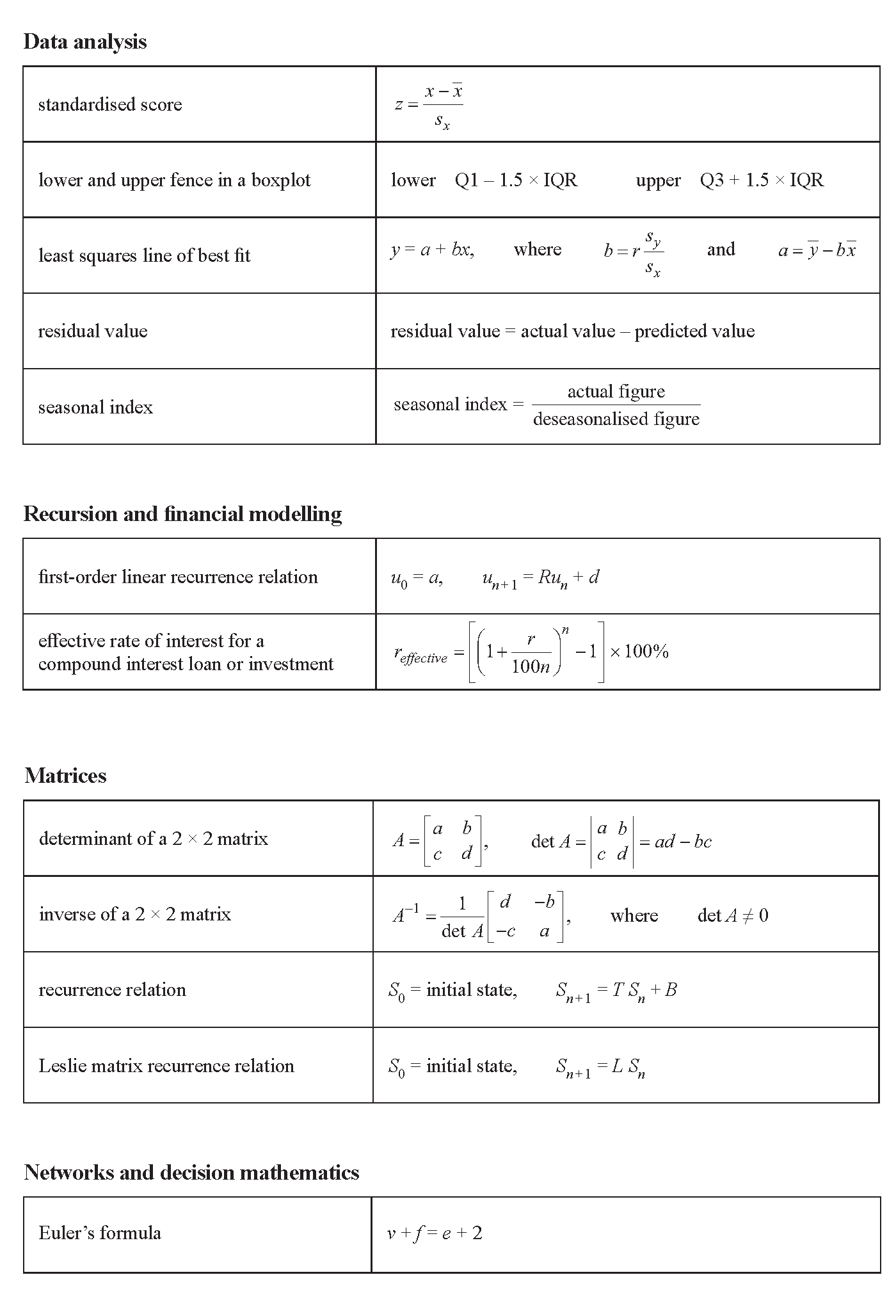VCE General Maths Recursion and Financial Modelling 2019 Exam 1 Mini Test
VCAA General Maths Exam 1
This is the full VCE General Maths Exam with worked solutions. You can also try Mini-Tests, which are official VCAA exams split into short tests you can do anytime.
Number of marks: 8
Reading time: 3 minutes
Writing time: 18 minutes
Instructions
• Answer all questions in pencil on your Multiple-Choice Answer Sheet.
• Choose the response that is correct for the question.
• A correct answer scores 1; an incorrect answer scores 0.
• Marks will not be deducted for incorrect answers.
• No marks will be given if more than one answer is completed for any question.
• Unless otherwise indicated, the diagrams in this book are not drawn to scale.
Recursion and financial modelling - 2019
The value of a compound interest investment, in dollars, after \(n\) years, \(V_n\), can be modelled by the recurrence relation shown below.
\( V_0 = 100\,000, \quad V_{n+1} = 1.01 V_n \)
The interest rate, per annum, for this investment is
- A. 0.01%
- B. 0.101%
- C. 1%
- D. 1.01%
- E. 101%
Geoff purchased a computer for $4500. He will depreciate the value of his computer by a flat rate of 10% of the purchase price per annum.
A recurrence relation that Geoff can use to determine the value of the computer after \(n\) years, \(V_n\), is
- A. \( V_0 = 4500, \quad V_{n+1} = V_n - 450 \)
- B. \( V_0 = 4500, \quad V_{n+1} = V_n + 450 \)
- C. \( V_0 = 4500, \quad V_{n+1} = 0.9 V_n \)
- D. \( V_0 = 4500, \quad V_{n+1} = 1.1 V_n \)
- E. \( V_0 = 4500, \quad V_{n+1} = 0.1 (V_n - 450) \)
Consider the following amortisation table for a reducing balance loan.
| Payment number | Payment | Interest | Principal reduction | Balance |
|---|---|---|---|---|
| 0 | 0.00 | 0.00 | 0.00 | 300 000.00 |
| 1 | 1050.00 | 900.00 | 150.00 | 299 850.00 |
| 2 | 1050.00 | 899.55 | 150.45 | 299 699.55 |
| 3 | 1050.00 | 899.10 | 150.90 | 299 548.65 |
The annual interest rate for this loan is 3.6%.
Interest is calculated immediately before each payment.
For this loan, the repayments are made
- A. weekly.
- B. fortnightly.
- C. monthly.
- D. quarterly.
- E. yearly.
The graph below shows the value, in dollars, of a compound interest investment after \(n\) compounding periods, \(V_n\), for a period of four compounding periods.

The coordinates of the point where \(n=2\) are \((2, b)\).
The value of \(b\) is
- A. 660.00
- B. 670.00
- C. 672.80
- D. 678.40
- E. 685.60
A machine is purchased for $30 000.
It produces 24 000 items each year.
The value of the machine is depreciated using a unit cost method of depreciation.
After three years, the value of the machine is $18 480.
A rule for the value of the machine after \(n\) units are produced, \(V_n\), is
- A. \( V_n = 0.872n \)
- B. \( V_n = 24\,000n - 3840 \)
- C. \( V_n = 30\,000 - 24\,000n \)
- D. \( V_n = 30\,000 - 0.872n \)
- E. \( V_n = 30\,000 - 0.16n \)
Joseph borrowed $50 000 to buy a new car.
Interest on this loan is charged at the rate of 7.5% per annum, compounding monthly.
Joseph will fully repay this loan with 60 monthly repayments over five years.
Immediately after the 59th repayment is made, Joseph still owes $995.49
The value of his final repayment, to the nearest cent, will be
- A. $995.49
- B. $998.36
- C. $1001.71
- D. $1001.90
- E. $1070.15
Millie invested $20 000 in an account at her bank with interest compounding monthly.
After one year, the balance of Millie's account was $20 732.
The difference between the rate of interest per annum used by her bank and the effective annual rate of interest for Millie's investment is closest to
- A. 0.04%
- B. 0.06%
- C. 0.08%
- D. 0.10%
- E. 0.12%
Consider the recurrence relation shown below.
\( A_0 = 3, \quad A_{n+1} = 2A_n + 4 \)
The value of \(A_3\) in the sequence generated by this recurrence relation is given by
- A. \(2 \times 3 + 4\)
- B. \(2 \times 4 + 4\)
- C. \(2 \times 10 + 4\)
- D. \(2 \times 24 + 4\)
- E. \(2 \times 52 + 4\)
End of Multiple-Choice Question Book
VCE is a registered trademark of the VCAA. The VCAA does not endorse or make any warranties regarding this study resource. Past VCE exams and related content can be accessed directly at www.vcaa.vic.edu.au
